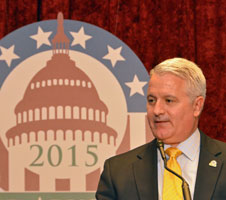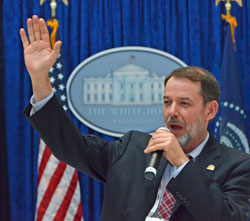 Corn growth has been slow and plant leaves are a purple tint in parts of the US. The cause is cold soil conditions and the purple coloration in leaves is sugars produced by photosynthesis. Usually the sugars would be used for root development, but growth is reduced in the cold soil temperatures. In these conditions The Microbial Catalyst® technology available in Agnition products can stimulate microbial activity in soil for less Purple Leaf Syndrome.
Corn growth has been slow and plant leaves are a purple tint in parts of the US. The cause is cold soil conditions and the purple coloration in leaves is sugars produced by photosynthesis. Usually the sugars would be used for root development, but growth is reduced in the cold soil temperatures. In these conditions The Microbial Catalyst® technology available in Agnition products can stimulate microbial activity in soil for less Purple Leaf Syndrome.
“When microbial activity is reduced, root development is reduced, and that lowers the phosphorus uptake by the plant. This inhibits the plants ability to metabolize sugars in the leaf and causes Purple Leaf Syndrome,” said Agnition agronomist Pete Hallberg. “Since microbial activity greatly influences the uptake of phosphorus, utilizing a Microbial Catalyst® to stimulate microbial activity is very important.”
The effects of Purple Leaf Syndrome were very apparent during early June on Dan Allred’s farm near Corydon, Iowa. One of his cornfields contains 10 replications of starter fertilizer and starter fertilizer mixed with Agnition product Generate®. The corn in every replication treated with the starter fertilizer alone was visually smaller, had less root mass and had dark purpling of the leaves.
“The soil is full of life. You think of it as livestock on top of the ground like cattle, but there is actually more underneath the soil than there is on top,” Allred said. “Driving by on the highway a couple weeks ago the untreated plants were purple and the treated ones were not. So that tells me that there was a greater uptake of phosphorus in the greener plants because of the product.”
Phosphorus is a macronutrient because of the important role it plays in plant growth; however, it is commonly tied-up in the soil, which reduces uptake. Since phosphorus is mainly cycled through the soil by organic residue breaking down and becoming incorporated into the soil organic matter, microbes are required to release the nutrient. Agnition microbiologist Rachel Raths said microorganisms including mycorrhizal fungi are critical to phosphorus uptake.
“The microorganisms form a connection with the plant roots. Once this happens the fungi can mine for phosphorus in the soil and transport it back to the root. Ultimately this brings the macronutrient into the plant, and when microbial activity is increased, phosphorus is more readily available,” Raths said.











